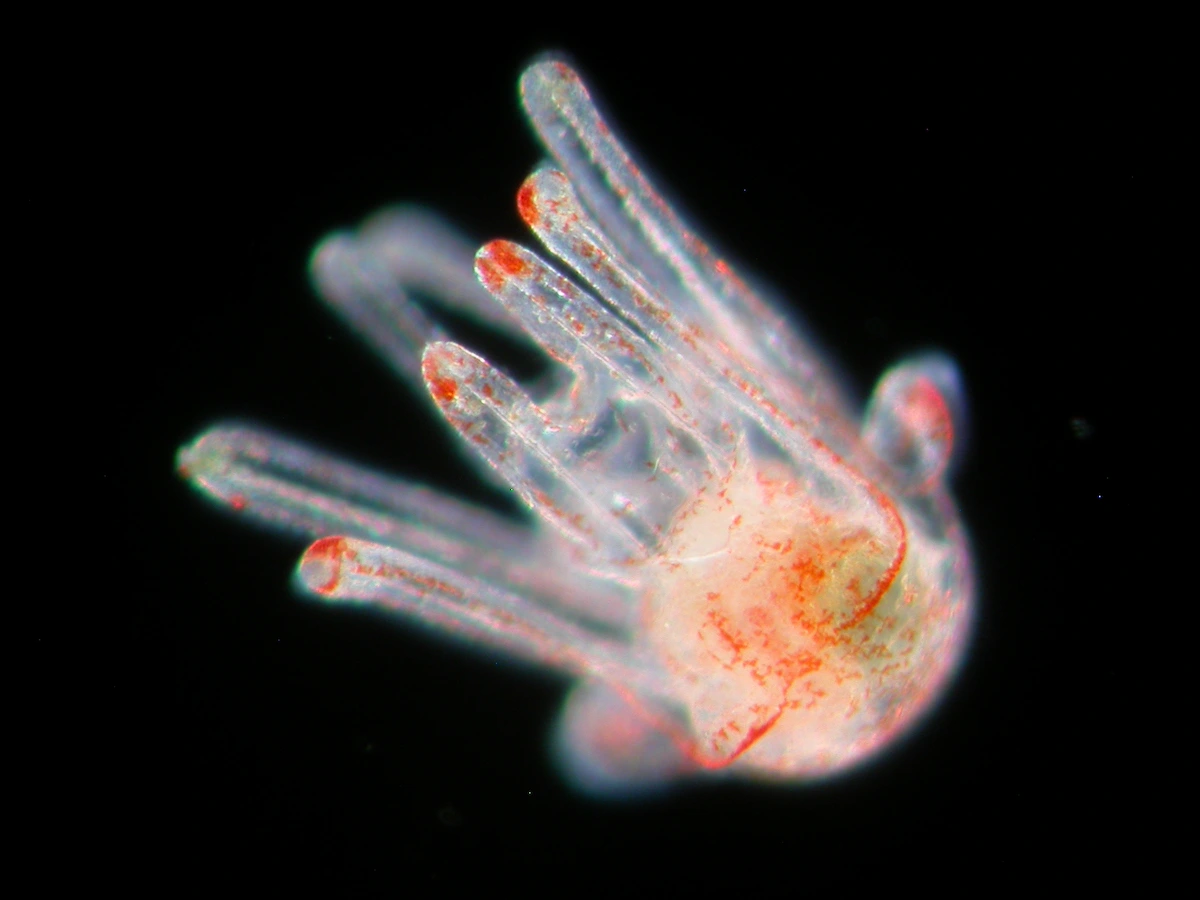When I’m out in the ocean, I’m obsessed by everything I see. I’m the woman in the boat who’s got her fish guide out to look up the names of any unknown fish while throwing out fun facts about the creatures I’ve already identified. Yet so much ocean life is so small, I might miss them entirely. I’m talking about plankton—the tiny plants and animals that make up 90% of the mass of all marine life in the ocean and play an extremely important role in the health of our planet.
Love ocean content?
Enter your email and never miss an update
var form = document.getElementById(’email-signup-65bd63092ca5b’);
form.querySelector(‘.rsform__field–email’).addEventListener(“nb:result”, e => {
var nbStatus = form.querySelector(“[name=”nb_email_status”]”);
var nbDate = form.querySelector(“[name=”nb_validation_date”]”);
var currentDate = new Date();
nbStatus.value = e.detail.result.response.result;
nbDate.value = currentDate.toISOString().split(‘T’)[0];
grecaptcha.enterprise.ready(async () => {
var tokenField = document.querySelector(“#email-signup-65bd63092ca5b [name=”token”]”);
var token = await grecaptcha.enterprise.execute(‘6Lcmr3shAAAAAAVRlvJrsUufEEQuItzNDlkpmB2g’, {action: ‘verify’});
tokenField.value = token;
});
});
<!– –>
Plankton are the start of the ocean’s food chain. Phytoplankton (a.k.a. plant-type plankton) turn sunlight into energy via photosynthesis and are eaten by zooplankton (a.k.a. animal-type plankton), small fish and invertebrates. Zooplankton, in turn, become food for larger species like fish, whales or crustaceans. Phytoplankton also pump out oxygen and sequester carbon. Five hundred million years ago, a bloom of plankton created the breathable oxygen-rich atmosphere humans depend on today.
Despite being so crucial to life on this planet, plankton are best defined by their go-with-the-flow nature. An organism is considered plankton if it can’t swim or move against the forces of the ocean like currents and tides. That’s why the name comes from a Greek word meaning “drifter.” A vast diversity of life falls under the heading of plankton from krill to single-celled algae to the offspring of crabs to jellyfish. Each plankter (that’s actually the word for individual plankton) is unique, and today I’m going to introduce you to a couple of the wandering creatures.
Dinoflagellates
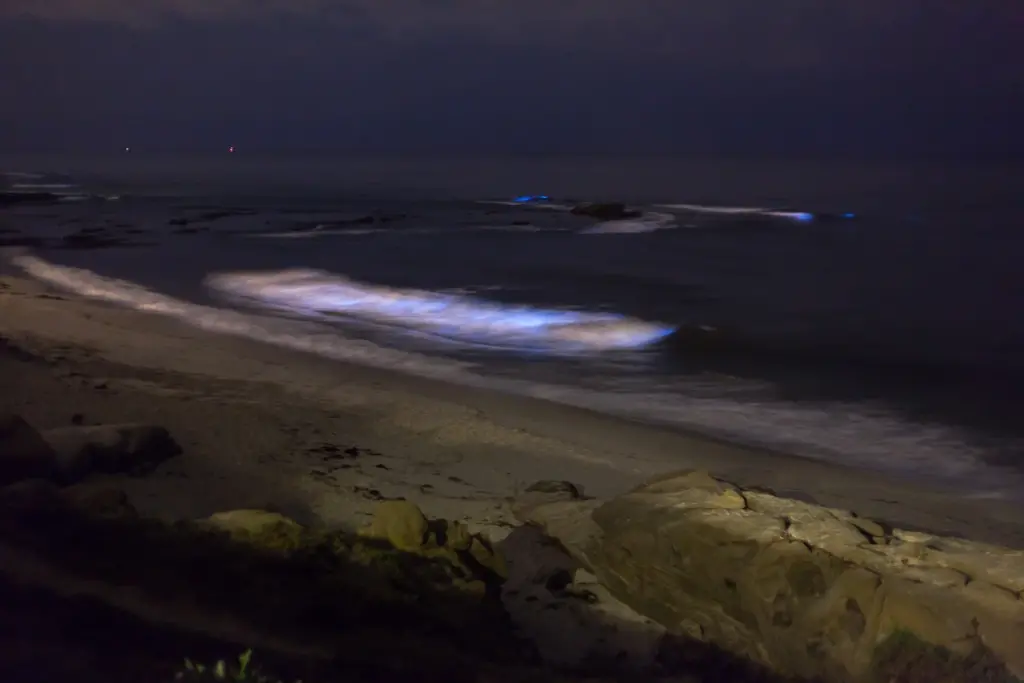
if(typeof window.oc_media_credits === ‘undefined’) {
window.oc_media_credits = {};
}
window.oc_media_credits[73554] = “Kevin Baird/ flickr”;
Dinoflagellates are among the most common type of plankton with more than 1,500 species living in our ocean. They are single-celled phytoplankton with flagella, thread like appendages that allow these microscopic organisms to move. These tiny organisms can be responsible for wonder and destruction in the ocean. If you’ve ever swum in a bioluminescent bay, the light you see is caused by dinoflagellates. The light may help distract or startle would-be predators. In addition, some species have symbiotic relationships, helping corals, jellyfish and other animals thrive.
On the flip side, dinoflagellates are largely responsible for deadly red tides. The term “red tide” comes from the pigment found in these tiny creatures and the color of the water when these blooms happen. When dinoflagellates grow uncontrollably, they can produce toxins and reduce the oxygen in the water leading to die-offs in the ocean. Red tides can cause health hazards for people on land and lead to the deaths of manatees, fish and other creatures in the ocean.
Baby Sea Creatures
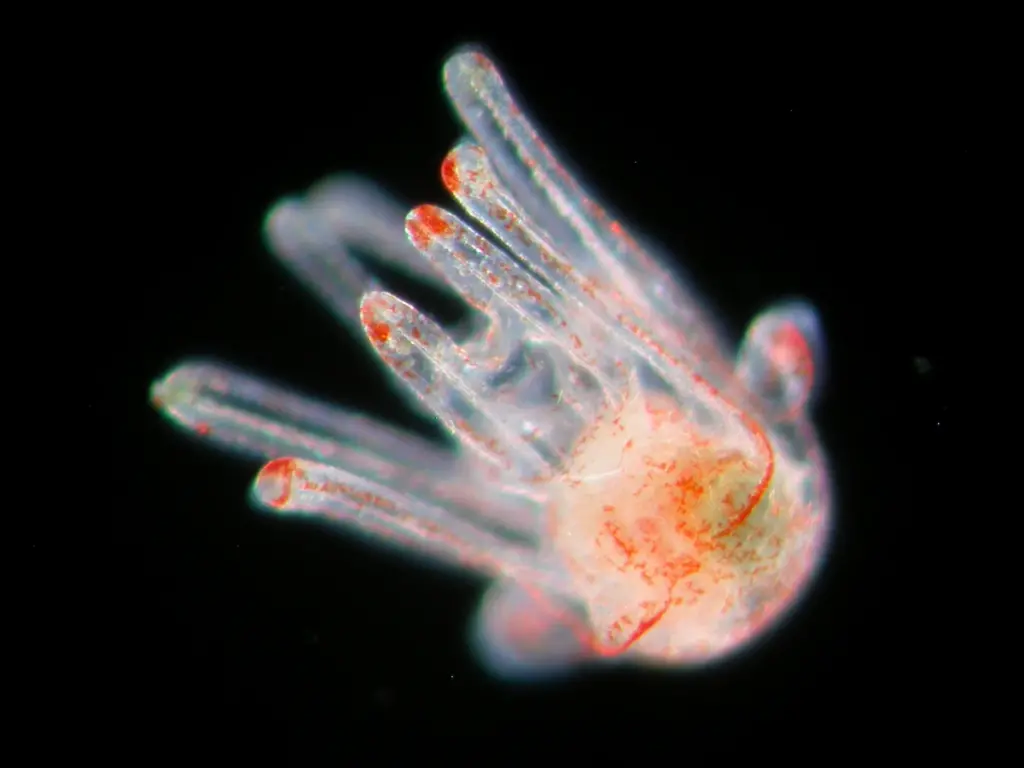
if(typeof window.oc_media_credits === ‘undefined’) {
window.oc_media_credits = {};
}
window.oc_media_credits[73553] = “Bruno C. Vellutini/ Wikimedia Commons”;
My favorite activity growing up was tide pooling, but I never really thought about how many of the creatures I encountered ended up there in the first place. That’s because the offspring star fish, sea urchins, sea anemones, barnacles, crabs, even octopuses start their lives as plankton that look almost nothing like the creatures they will one day become. If you want to play the wildest game of “Where are they now?” try to match ocean creatures with their baby forms in this quiz from The American Museum of Natural History.
Siphonophores

if(typeof window.oc_media_credits === ‘undefined’) {
window.oc_media_credits = {};
}
window.oc_media_credits[73552] = “NOAA/OAR/OER, 2016 Deepwater Exploration of the Marianas, Leg 1.”;
There are about 175 different species of siphonophores, the most famous being the Portuguese Man-O’-War. Another notable siphonophore is the Apolemia, which may be the longest creature on Earth at 150 feet long. That’s about the length of 1.5 blue whales! Proof that not all plankton are the tiny creatures we commonly think of them to be.
While they may appear to be a single organism, they are actually a colony of individuals called zooids. Each zooid has a unique function in the colony. For instance, there are zooids that are responsible for swimming and moving around, while others specialize in digestion and providing food for the whole colony. There are even battle zooids that are always on the ready to inject toxins into prey.
Comb Jellies
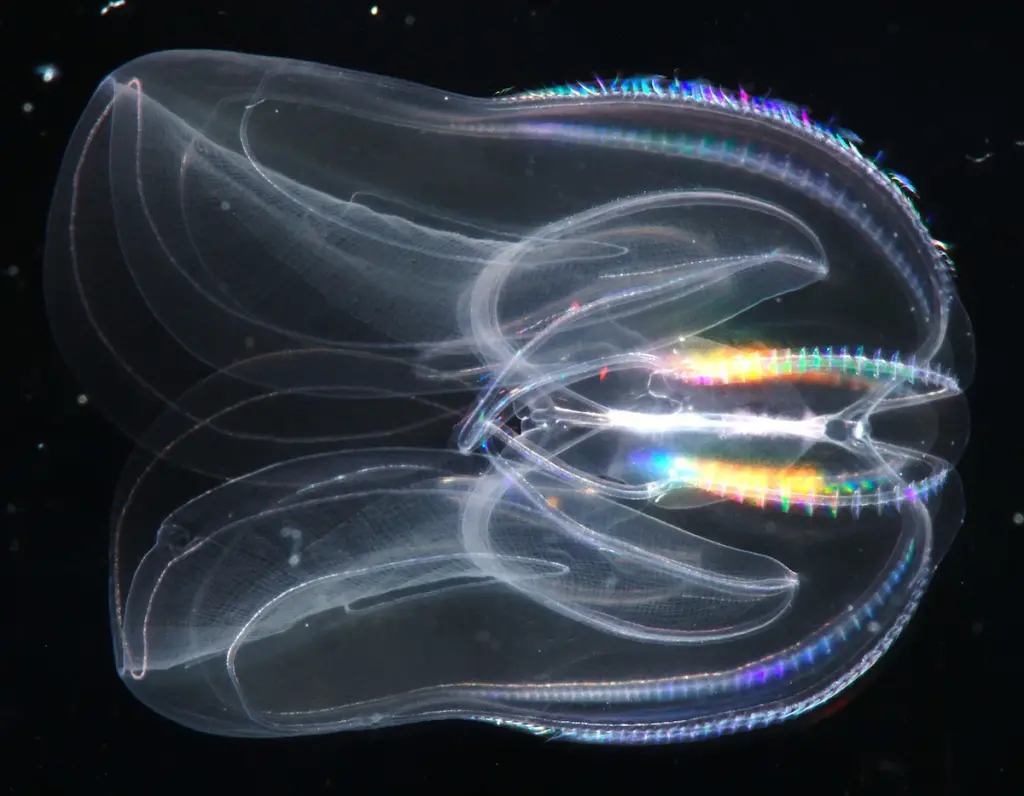
if(typeof window.oc_media_credits === ‘undefined’) {
window.oc_media_credits = {};
}
window.oc_media_credits[73550] = “Bruno C. Vellutini/ Wikimedia Commons”;
When you think of plankton, you often think of tiny animals, not beautiful otherworldly creatures like comb jellies. They are mesmerizing to watch because they produce a dazzling array of colors. This effect is caused by their cilia, which are like little hairs and are what give the comb jellies their name. These combs diffract light, breaking it up like a rain droplet or prism, to create rainbows.
Despite the similar name, comb jellies are not types of jellyfish. In fact, they could be descended from the Earth’s oldest animals. Recent research suggests that they could be the closest relatives of the first group to split off from our common ancestor around 500 million years ago. Comb jellies are pretty simple creatures without intestines, lungs or stomachs but they do have a nervous system that has puzzled scientists. Comb jellies have a nerve net that doesn’t have the usual synapses that humans and most other animals need for their neurons to communicate. Comb jellies could hold the answers to so many questions we have about how life evolved on Earth.
Diatoms
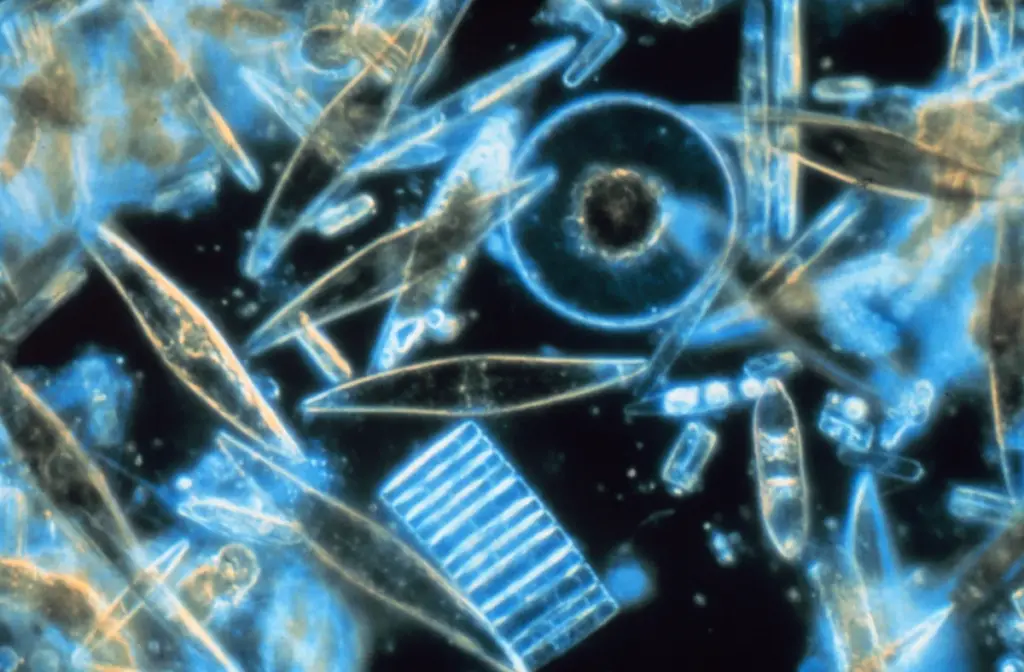
if(typeof window.oc_media_credits === ‘undefined’) {
window.oc_media_credits = {};
}
window.oc_media_credits[73551] = “Prof. Gordon T. Taylor, Stony Brook University”;
Diatoms are single-celled algae and among the largest groups of life on Earth. You can find diatoms anywhere it’s wet: freshwater, the ocean, even in moist soil. There are more than 100,000 species of diatoms and counting, as scientists find new types every year. What each diatom has in common is a cell wall made of silica, the same component we use to make glass, meaning they literally live in glass houses. Silica is also the main component of opals, and diatoms share some of that beauty, earning the name “jewels of the sea.” Diatoms are not only beautiful but are also powerful. They produce a significant amount of the air we breathe and are critical to marine ecosystems all over the world.
Some of the most amazing creatures on Earth are the ones we can’t easily see on the surface. Plankton play a critical role in sustaining life on this planet. Climate change is causing disruptions that we can see like intensifying storms, but it is also causing issues that we can’t see. That’s why it is so important that we all do what we can now to reduce polluting carbon emissions that are changing the ocean’s temperature, chemistry and function. Ocean Conservancy views climate change as the greatest challenge facing our planet today and is committed to finding ocean-based solutions to address it. Join us in taking action to combat climate change now.
The post Five Types of Plankton appeared first on Ocean Conservancy.

